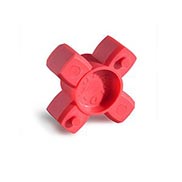 Duty cycle is a critical but often overlooked consideration during the coupling selection process. Critical elements like types of motion, potential shock load scenarios, and start/stop situations should all be evaluated when selecting a coupling for your next motion system application. Here, Bobby Watkins of Ruland Manufacturing gives us some insight on what to look for.
Duty cycle is a critical but often overlooked consideration during the coupling selection process. Critical elements like types of motion, potential shock load scenarios, and start/stop situations should all be evaluated when selecting a coupling for your next motion system application. Here, Bobby Watkins of Ruland Manufacturing gives us some insight on what to look for.
“Duty cycle, types of motion, continuous start/stop and reversing, how often is the system running? These all come into play with selection. Selection error often occurs when the type of motion is not accounted for or when the number of cycles is not understood. Talk to the manufacturer, give them your duty cycle. At Ruland, we can give the user an idea of how much they need to oversize the coupling to account for applications that have a very high duty cycle.
Here’s an application example of a duty cycle, hard start/stop, a system running at full speed and neither stops or reverses abruptly. A Jaw coupling is an ideal fit for these types of application. Gradual start/stop. Systems running at full speed then slowly comes to a stop and/or reverses. Beam couplings can work well in these applications and also for many of the coupling types like the bellows type, and in most cases, the disc type. This gradual start/stop cycle is a must, just for coupling life because they can’t handle that hard stop and start shock loads.
On dampening, frequent starts and stops, high shock loads may require a coupling that can dampen the impulse load, again, jaw couplings are a good option. Selection error occurs when this is not accounted for. In that type of an application, you use a beam coupling. When asking for a lot of dampening, you need to choose a jaw coupling.
Dampening application examples where there are different materials available, different hardness of material to change the dampening characteristics, are common in food processing OEM applications. Frequently, we’ll see an originally specified spider that was too stiff and would prematurely lose elasticity. Trying a softer spider, which can eliminate the premature failure is an option. It can give you that extra dampening characteristic that you need.
Ruland
ruland.com

Leave a Reply